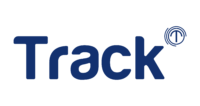- Align learning with strategy
- Create a safe and supportive environment
- Promote continuous and experiential learning
- Leverage technology and innovation
- Learn from best practices and external sources
1. Align learning with strategy
One of the first steps to overcome barriers to organizational learning is to align your learning initiatives with your organizational strategy. This means that you should identify the knowledge gaps, skills needs, and performance indicators that support your vision, mission, and objectives. By doing so, you can ensure that your learning efforts are relevant, meaningful, and aligned with your business outcomes. You can also communicate the value and benefits of learning to your stakeholders, employees, and customers, and gain their buy-in and support.
2. Create a safe and supportive environment
Another key strategy to overcome barriers to organizational learning is to create a safe and supportive environment for your employees. This means that you should encourage a culture of openness, feedback, and collaboration, where employees can share their ideas, opinions, and experiences without fear of judgment, criticism, or punishment. You should also provide them with the necessary resources, tools, and guidance to facilitate their learning process, and recognize and reward their efforts and achievements. By doing so, you can build trust, engagement, and motivation among your employees, and foster a sense of ownership and accountability for their learning.
3. Promote continuous and experiential learning
A third important strategy to overcome barriers to organizational learning is to promote continuous and experiential learning among your employees. This means that you should offer them various opportunities and platforms to learn from their daily work, projects, challenges, and interactions with others. You should also encourage them to apply their learning to real-life situations, reflect on their outcomes, and learn from their successes and failures. By doing so, you can enhance their skills, knowledge, and competencies, and help them adapt to changing needs and demands.
4. Leverage technology and innovation
A fourth effective strategy to overcome barriers to organizational learning is to leverage technology and innovation to enhance your learning capabilities. This means that you should use various digital tools and platforms, such as e-learning, mobile learning, social media, gamification, and artificial intelligence, to deliver, access, and manage your learning content and activities. You should also foster a culture of innovation, where employees are encouraged to experiment with new ideas, methods, and solutions, and learn from their results. By doing so, you can increase the efficiency, effectiveness, and flexibility of your learning process, and keep up with the latest trends and developments.
5. Learn from best practices and external sources
A fifth useful strategy to overcome barriers to organizational learning is to learn from best practices and external sources. This means that you should benchmark your learning performance and practices against other organizations in your industry or sector, and identify the areas where you can improve or innovate. You should also seek external sources of knowledge and inspiration, such as experts, mentors, partners, customers, and competitors, and learn from their insights, feedback, and experiences. By doing so, you can broaden your perspective, gain new ideas, and enhance your competitive advantage.
SOURCE: https://www.linkedin.com/advice/3/what-most-effective-strategies-overcoming-barriers-xjybe

